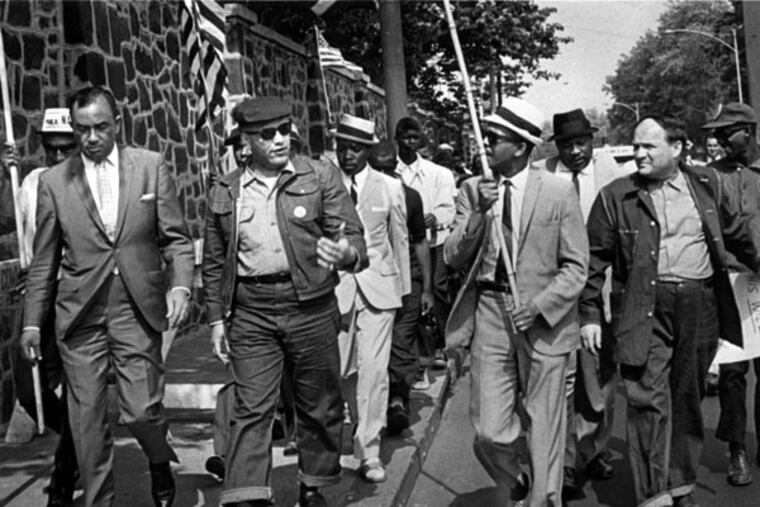Celebrating the 50th Anniversary of the march to desegregate Girard College
Marchers from 1965 Girard College protests to honor 50th Anniversary on May 1.

HER NAME WAS Karen Asper. She was only 16, and one of the hundreds who marched in front of the wall at Girard College to protest the segregated, all-white boarding school established by the 19th-century merchant-banker Stephen Girard.
Karen Asper Jordan, now 66, can't remember if she joined the demonstrations the very first day - on May 1, 1965.
But she and dozens of other teenagers in the North Philadelphia neighborhood were called the "Young Militants," and they stayed with the march for the duration - seven months and 17 days.
Jordan is president of the Cecil B. Moore Philadelphia Freedom Fighters, which has planned a 50th-anniversary celebration of the march to desegregate Girard College on Friday at the school, at 21st Street and College Avenue.
Although it is called a college, it is a boarding school for children in grades K-12 - at least for now.
There is a court battle to eliminate the high school and convert it to a day school because the Board of Directors of City Trusts says it is running out of money to pay for the school's operations.
Jordan and the young marchers looked up to the late Cecil B. Moore, the bold and flamboyant lawyer and NAACP president who started the protests with a rumor, leaked to police, that they were going to cross into the college grounds in a meat delivery truck.
The morning the march began, protesters found the sidewalks outside the 10-foot-high walls thick with police officers lined up around the 43-acre campus.
"It had not reached a point of rage," said Richard Watson, who was 19 at the time and an art student.
Now an official at the African American Museum in Philadelphia, Watson said, "It was black response and resistance to an egregious situation."
Berynice Mills De Vaughan, then 15, had recently moved to Philadelphia from Virginia.
When the Girard College protests began, she and her older sister marched. Her mother and a neighbor made sandwiches to feed the protesters. "The Salvation Army gave food only to the police," she said.
Those teenage marchers were also known as "Cecil's People," said Jordan, now a nurse at Thomas Jefferson University Hospital.
But most striking was that they all took on the first name of "Freedom."
There was Freedom George Brower and Freedom Smitty (Kenneth Salaam); Freedom Meldorn Shamlin and Freedom Tree.
Eugene Dawkins' nickname was "Tree" because at 6 feet 5, he was so much taller than the others.
As the marching was about to end on Dec. 16, 1965, after the state agreed to join in a federal lawsuit to challenge Girard's will, some of the Freedom Fighters were told to protest outside the State Office Building, at Broad and Spring Garden streets.
All of a sudden, Jordan said, she heard a lot of noise in the back of the building.
"I saw them beating Freedom Tree," she said. "I thought they were going to kill him. I'd never seen a person beaten like that. Every time they beat his head, you could hear it.
"I jumped down to pull the police off him and they pushed me back."
She said officers in the Civil Disobedience Squad, who often tried to help the young protesters, pushed her against a wall.
"I was screaming, 'They're going to kill him!' Tree was clawing at the cement to try to get under the truck. They were still beating him, and when they pulled him from under the truck, he was unconscious."
Jordan and others said the violence in Baltimore sparked by the death of Freddie Gray is a reminder that little has changed.
Dawkins, now 74, said he believed the police targeted him because he "talked back" to police outside the college wall, when they tried to antagonize protesters.
Both Dawkins and Jordan said the late George Fencl, then second in command of the Civil Disobedience Squad (now Civil Affairs), tried to keep them from getting into trouble with the uniformed officers.
"They got to see us every day," Jordan said of Fencl's unit. "They saw we weren't troublemakers."
Jordan said that after an 8 a.m. program at the college wall on Friday, the former protesters will attend a program inside the school.